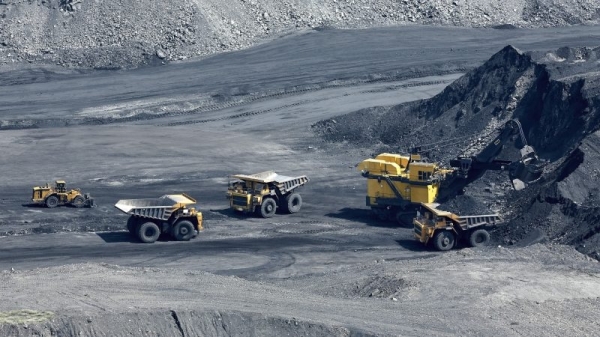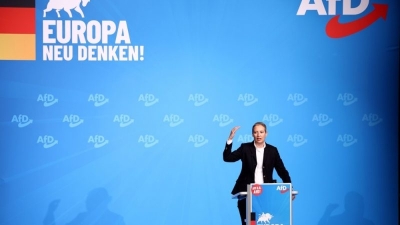Europe’s coal legacy remains a major climate hurdle

The European Union is responsible for emitting more methane from coal than other fossil fuels due to continued mining operations in Europe, insufficient measures, and a legacy of abandoned mines.
Europe has a long history of large-scale coal mining, and while the EU is trying to move toward cleaner alternatives, whether natural gas or renewables, coal remains the dirtiest fuel in use and the bloc’s biggest source of methane emissions.
Methane – known to consumers as “natural” gas – is a massive driver of global warming, and over 20 years, it has had an impact 80 times greater than CO2. Aside from the infamous carbon, methane is the second-most important greenhouse gas.
For the EU, tackling territorial methane emissions means eventually reigning in agricultural emissions – cattle emissions, methane released from the ground by tilling, and waste dumps, but the use of fossil fuels comes first.
“A 75% cut in methane emissions from fossil fuels by 2030 is imperative to stop the planet from warming to a dangerous level,” said Fatih Birol, chief of the International Energy Agency (IEA), in a press release on Wednesday (13 March).
Globally, methane emissions are on the rise, hitting 120 million tonnes in 2023, although the IEA is predicting a drop in the coming years, and oil production continues to be the biggest individual contributor.
In Europe, territorial methane emissions from fossil fuels are a coal story: 815,000 tonnes of Methane from coal, compared to 589,000 from gas and 224,000 tonnes from oil, according to the IEA’s 2023 Methane Tracker.
Those figures are only from active operations – abandoned coal mines continue to emit another 235,000 tonnes of methane annually. Methane is created when coal is handled – the greenhouse gas is intrinsic to the porous fuel.
That’s one-ninth of the annual emissions of the bloc’s dirtiest country, Germany – on a 20-year basis. Every year, before it is ever burned.
“Coal mines continue to be allowed to emit massive amounts of methane to the air even though there are proven solutions to prevent it,” says Sabina Assan, a methane analyst at the clean-energy think-tank Ember.

COP28 climate summit puts spotlight on turning methane pledges into action
Delegates at this year’s UN COP28 climate summit are anxious to boost the world’s climate change agenda with concrete plans for clamping down on the second-most prominent greenhouse gas – methane.
Where are the measures
Methane emissions from fossil fuels are considered the lowest-hanging fruit, and tackling agriculture and waste dumps is considered more politically sensitive.
At the global level, there’s the methane pledge, where countries vow to slash methane by 30% until 2030.
This commitment was renewed at COP28 in Dubai and expanded to big players in the oil and gas industry. The USA’s environment agency, EPA, also announced strict methane rules.
However, the EU has adopted the most comprehensive rulebook to date: the methane regulation, informally agreed just before COP28, which will enter into force step-by-step from 2025.
“The IEA report is another reminder and confirmation that the EU urgently needs the EU Methane Regulation and that global measures must be further expanded,” said Jutta Paulus, a green EU lawmaker who led the bloc’s methane rules negotiations.
From 2025, underground coal mines—where methane accumulates underground and is traditionally released into the atmosphere—can no longer vent their dirty air. Much like oil and gas producers, methane must then be burned before it can be released.
Also, in 2025, EU countries need to start tracking their abandoned and closed coal mines, which emit at least a sixth of the methane linked to coal. Countries like Romania are said to have swathes of abandoned coal shafts, although nobody knows exactly how many.
Their emissions must be measured from 2026.
Then, in 2030, the EU’s methane regulation will trigger in full and methane emissions from thermal coal, used in coal power plants and heating, will be limited to three tonnes of methane per 1000 tonnes of mined coal, and old mines must be stopped.
-“-We realise that with these considerably higher limit values compared to the Commission proposal, substantial quantities of methane will still be emitted,” concedes Paulus.
But given the “broad majority against ambitious limit values at the start,” insisting on a more ambitious approach would have been “illusory,” she explains, adding that more strict emission limits would have blown up a coal phase-out agreement in Poland.
As for coking coal, which blast furnaces use for steel production, the EU’s methane regulation has “not yet set a threshold for methane emissions from coking coal,” says Assan.
Once again, the European Commission will develop rules—the regulation says the bloc’s executive must present “restrictions on venting methane from ventilation shafts for coking coal mines” by 2027.

Negotiators strike deal on first ever EU law to tackle methane leakage
The EU struck an informal agreement on its first ever law to tackle methane emissions in the energy sector, following late-night negotiations in Brussels that will oblige importers of fossil fuels to match minimum standards from 2030.
Read more with Euractiv




